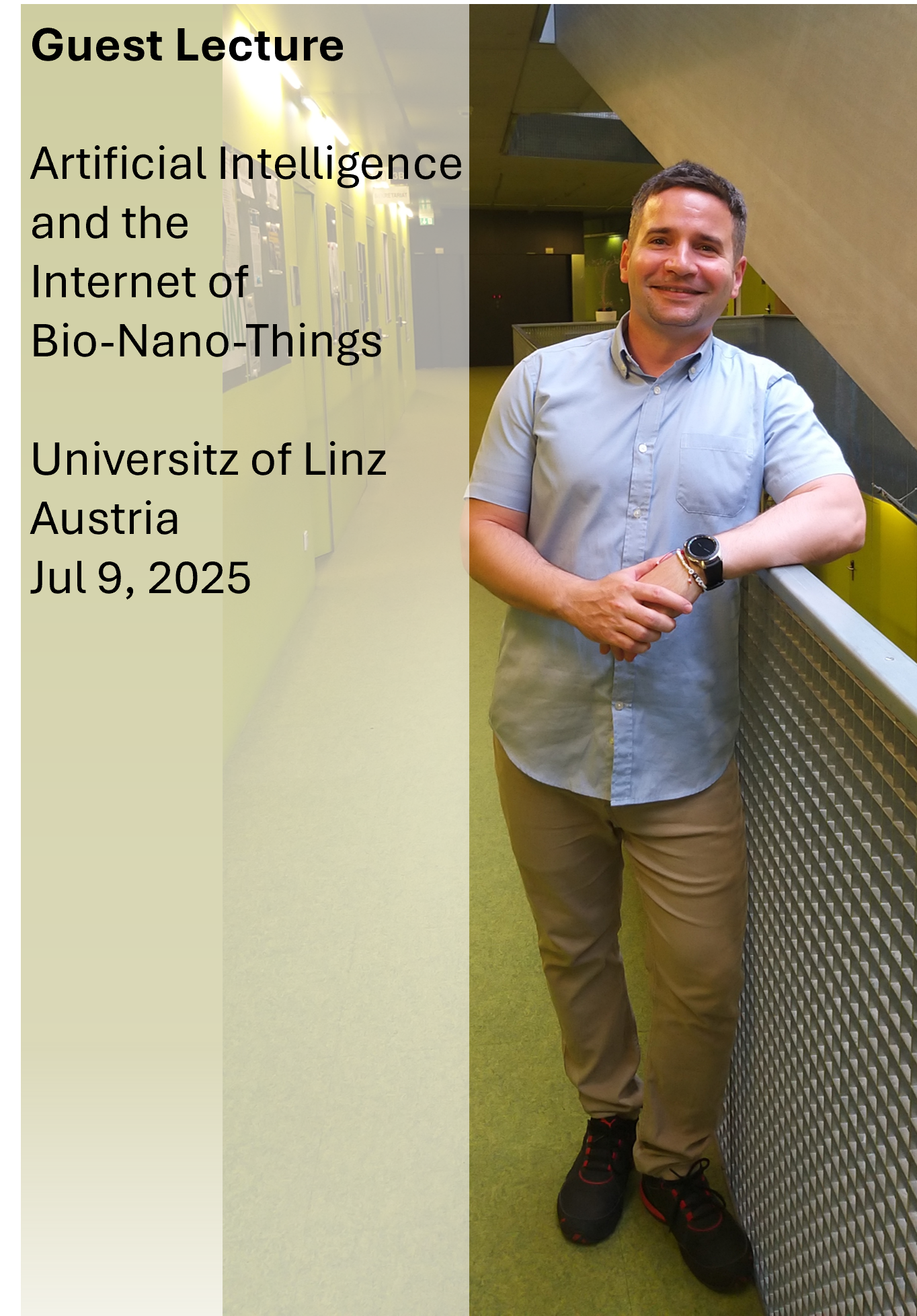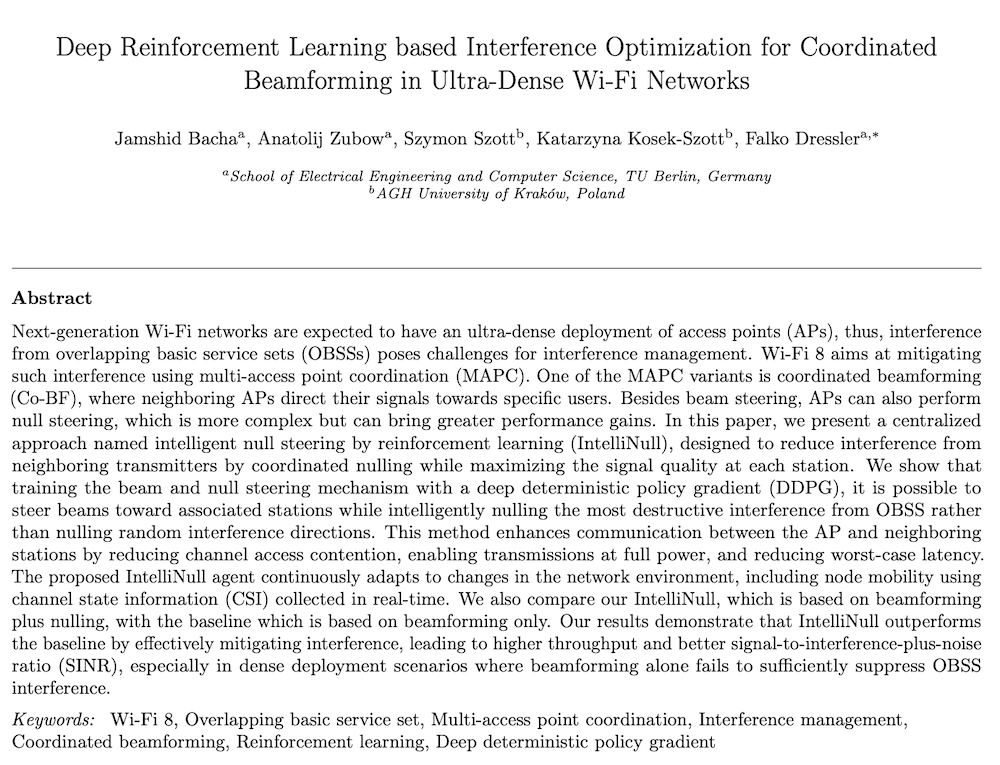Literature Database Entry
klingler2018efficient
Florian Klingler, "Efficient Wireless Communication in Vehicular Networks," PhD Thesis, Department of Computer Science, Paderborn University (UPB), September 2018. (Advisor: Falko Dressler; Referees: Falko Dressler, Jiannong Cao and Lars Wolf)
Abstract
Wireless communication among vehicles has been shown to be beneficial for a variety of use cases in the automotive domain ranging from pure safety to traffic efficiency and to entertainment applications. To accomplish communication, different protocol stacks have been standardized around the world, e.g., ETSI ITS-G5 in Europe and IEEE 1609 WAVE in the U.S., both building upon IEEE 802.11p WLAN, yet for many applications, efficiency is still a problem. We thus begin this PhD thesis with an analytical investigation of the capacity bounds of IEEE 802.11p. As a first contribution towards efficient wireless communication, we study the performance of IEEE 802.11p based unicast communication, which is, e.g., used by the ETSI ITS-G5 GeoNetworking specification. Our investigations reveal that unicast communication employing retransmissions at the MAC layer is not only not beneficial in vehicular communications, but maybe harmful in typical scenarios, as it leads to higher communication delays. Based on our findings and current limitations of ETSI ITS-G5, we present as a second contribution a purely broadcast based networking architecture, which categorizes communication demands of applications into four distinct classes. A central building block of our network layer is the support of 2-hop neighbor information using space efficient Bloom filters to provide nodes a better overview of their vicinity. In our third contribution, we take a detailed look on how to properly maintain this neighbor information and propose Bloom Hopping, a 2-hop message dissemination protocol, which operates independently from the road topology. Simulation results show that it can outperform traditional 2-hop approaches (not using Bloom filters) in terms of requiring less channel resources and providing better application performance. As a fourth contribution, we focus on the scalability of vehicular communication by taking advantage of multi-channel operation similar to what has been proposed in IEEE 1609.4 WAVE. In particular, we design a set of scheduling algorithms that answer the question when to send which information on which channel. Results reveal that our system has lower channel resource requirements and provides better application layer performance in comparison to single-channel protocols. As a summary, we believe the work presented in this PhD thesis brings vehicular communication forward in research and one step closer to the road.
Quick access
Original Version ![]() (at publishers web site)
(at publishers web site)
Authors' Version ![]() (PDF on this web site)
(PDF on this web site)
BibTeX ![]()
Contact
BibTeX reference
@phdthesis{klingler2018efficient,
author = {Klingler, Florian},
doi = {10.17619/UNIPB/1-389},
title = {{Efficient Wireless Communication in Vehicular Networks}},
advisor = {Dressler, Falko},
institution = {Department of Computer Science},
location = {Paderborn, Germany},
month = {9},
referee = {Dressler, Falko and Cao, Jiannong and Wolf, Lars},
school = {Paderborn University (UPB)},
type = {PhD Thesis},
year = {2018},
}
Copyright notice
Links to final or draft versions of papers are presented here to ensure timely dissemination of scholarly and technical work. Copyright and all rights therein are retained by authors or by other copyright holders. All persons copying this information are expected to adhere to the terms and constraints invoked by each author's copyright. In most cases, these works may not be reposted or distributed for commercial purposes without the explicit permission of the copyright holder.
The following applies to all papers listed above that have IEEE copyrights: Personal use of this material is permitted. However, permission to reprint/republish this material for advertising or promotional purposes or for creating new collective works for resale or redistribution to servers or lists, or to reuse any copyrighted component of this work in other works must be obtained from the IEEE.
The following applies to all papers listed above that are in submission to IEEE conference/workshop proceedings or journals: This work has been submitted to the IEEE for possible publication. Copyright may be transferred without notice, after which this version may no longer be accessible.
The following applies to all papers listed above that have ACM copyrights: ACM COPYRIGHT NOTICE. Permission to make digital or hard copies of part or all of this work for personal or classroom use is granted without fee provided that copies are not made or distributed for profit or commercial advantage and that copies bear this notice and the full citation on the first page. Copyrights for components of this work owned by others than ACM must be honored. Abstracting with credit is permitted. To copy otherwise, to republish, to post on servers, or to redistribute to lists, requires prior specific permission and/or a fee. Request permissions from Publications Dept., ACM, Inc., fax +1 (212) 869-0481, or permissions@acm.org.
The following applies to all SpringerLink papers listed above that have Springer Science+Business Media copyrights: The original publication is available at www.springerlink.com.
This page was automatically generated using BibDB and bib2web.







